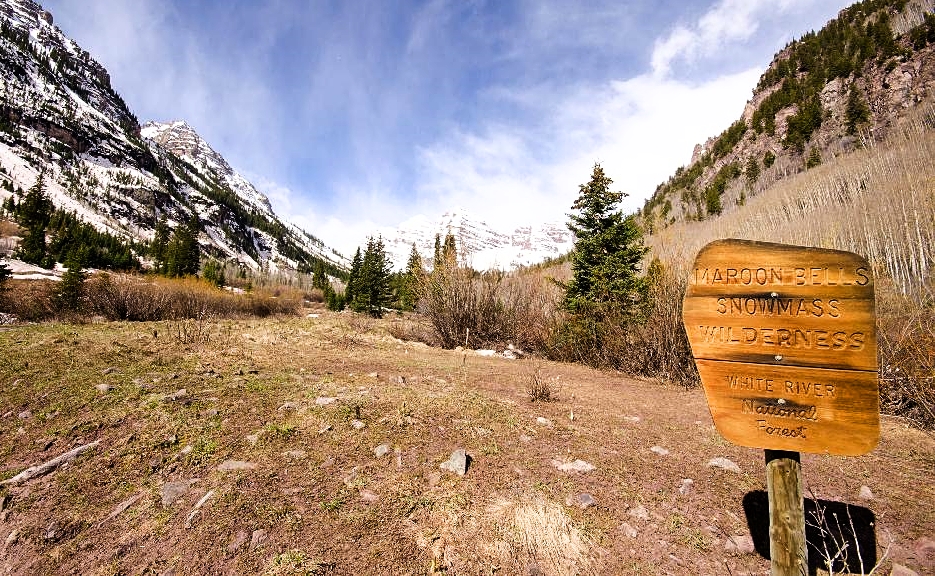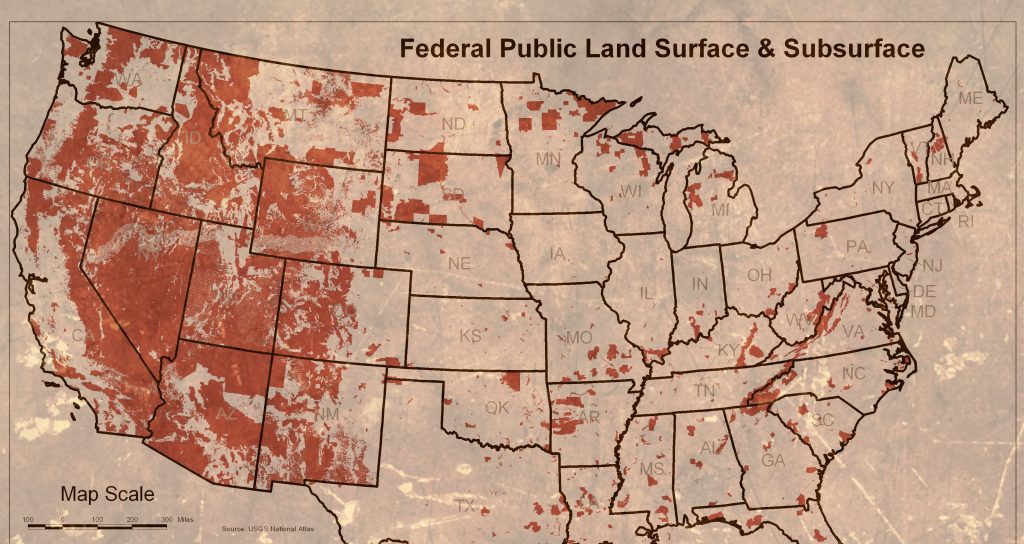When the rights of a city; such as its rights to water, property, and other resources, are constrained by county and federal governments, one must ask if property rights exist at all. Cities such as Aspen which are surrounded by federally-controlled lands, are under the thumbs of unelected bureaucrats in federal agencies which hold the reins on critical local resources. The largely liberal, ‘environmentally-minded’ residents of the City of Aspen may want to rethink their love affair with the federal government’s centralized control of local resources and lands. ~FRR Editor~
Feds: No water rights with permit
The United States of America and Pitkin County are among the 10 parties that have filed statements of opposition in two conditional water rights cases being pursued by the city of Aspen in water court for Maroon Creek Reservoir and Castle Creek Reservoir.
In addition to the two governments, four environmental organizations and four private-property owners filed statements in the cases by the Dec. 31 deadline.
Such statements of opposition are typically short and generic, and simply give notice of formal entry into a case. But the statements filed by the U.S. and Pitkin County offer some insight into their concerns about the city’s water rights applications.
Attorneys at the U.S. Justice Department acting on behalf of the U.S. Forest Service told the court the city “cannot show that it can and will” complete the two reservoirs “within a reasonable time” because both potential reservoirs would flood portions of the Snowmass-Maroon Bells Wilderness.
And Pitkin County told the court the city “appears to be speculating with no reasonable demonstration of need” for the reservoirs.
The city filed two applications in Division 5 water court in Glenwood Springs on Oct. 31, one for Maroon Creek Reservoir (16CW3128) and one for Castle Creek Reservoir (16CW3129). Aspen is seeking to extend the conditional water storage rights for another six years. The rights were appropriated in 1965 and adjudicated in 1971.
The conditional rights, as currently decreed, cannot be made absolute unless the city builds a dam 155 feet tall and an estimated 1,280 feet wide across Maroon Creek, within view of the Maroon Bells, and a dam 170 feet tall and an estimated 1,220 feet wide across upper Castle Creek.
The Maroon Creek Reservoir would hold 4,567 acre-feet of water and flood 85 acres of land, and the Castle Creek Reservoir would hold 9,062 acre-feet of water and flood 120 acres of land. Water in both reservoirs would flood some land within the wilderness boundary.
The federal case
The two statements of opposition from the federal government are nearly identical, save for the name of the potential reservoirs in each case. Both begin by saying the reservoir would require a Forest Service permit, and then they raise the wilderness issue.
“Maroon Creek Reservoir would impound water that would inundate lands within the Maroon Bells-Snowmass Wilderness Area,” the statement in the Maroon Creek case said. “Development of Maroon Creek Reservoir is not authorized by (federal law) or any existing special use permit or land use authorization.
“Under the Wilderness Act of 1964, the U.S. Forest Service cannot authorize any new development of conditional water rights, including the conditional water right requested in Case No. 16CW3128 in the Maroon Bells-Snowmass Wilderness Area,” it continued.
“Because the applicant (the city) does not hold a valid right to use or occupy national forest system lands, and the U.S. Forest Service lacks authority to authorize development of Maroon Creek Reservoir within the Maroon Bells-Snowmass Wilderness Area, the applicant cannot show that it can and will complete the claimed appropriation within a reasonable time,” the statement of opposition said.
The statements of opposition from the U.S. were signed by John Cruden, the assistant attorney general at the Environment and Natural Resources Division in the Department of Justice in Washington, D.C., and James DuBois, a trial attorney with the department, who is based in Denver.
In September, the acting district ranger in the Aspen-Sopris Ranger District, Kevin Warner, told the Aspen City Council it would take a presidential exemption to the Wilderness Act to allow the Forest Service to issue a permit for the reservoirs.
“Based on our understanding of the Wilderness Act, and the fact that there was no exception built into the designation for the Maroon-Bells Wilderness Area … it would need to go to the President,” Warner said.
The city has not filed for a Forest Service permit for either reservoir.
Pitkin County view
Staff attorneys for Pitkin County told the court that the city should be held to “strict proof” to its claims, including its “ownership of or enforceable property interest” in the dam and reservoir sites.
“This water right is located within a designated wilderness area and the applicant’s ability to obtain the property interest necessary to construct the structure, as decreed, within this wilderness area is unproven,” the county told the court.
The county also told that court the city’s 2016 water supply study “demonstrates that this water right is unnecessary to meet current and future demand within a reasonable planning period using normal population growth assumptions.”
It also said recent statements by Aspen’s mayor and city council members “indicate that (the city) does not intend to effectuate these water rights in a reasonable time period,” and that the city “appears to be speculating with no reasonable demonstration of need.”
16 statements
In all, 16 statements of opposition were filed in the two water court cases by 10 different parties.
In addition to the two governments, U.S. and Pitkin County, four environmental organizations filed statements in both cases: Colorado Trout Unlimited, American Rivers, Wilderness Workshop and Western Resource Advocates.
As such, there is a common set of six parties in each case — the two governments and the four environmental groups — and they’ve filed 12 statements between them, six in each case.
There are also four different property owners, two in each case, and they each filed one statement. That adds four statements to the list of 12, for a mind-numbing total of 16.
Making it somewhat easier to track, the list does break out into eight parties in each case: two governments, four environmental organizations, and a unique pair of property owners.
The differing pairs of property owners in each case brings to 10 the total number of parties across the two cases.
Property owners
The two property owners who filed in the Maroon Creek case are Roaring Fork Land and Cattle Co. and Larsen Family LP.
Roaring Fork Land and Cattle is an entity controlled by Thomas and Margo Pritzker. The Pritzkers, who are on the Forbes billionaires list, own property near T Lazy 7 Ranch in the Maroon Creek valley.
Marcella Larsen of Aspen is the co-manager of the Larsen Family LP, based in Boca Raton, Fla., and she signed the statement of opposition. The Larsen family owns residential property in the lower Maroon Creek valley.
The two property owners who filed in the Castle Creek case are Double R Creek Ltd. and Asp Properties LLC. Double R Creek is controlled by Robert Y.C. Ho, a member of a prominent Hong Kong family, while Asp Properties is controlled by Charles Somers, the CEO of a company based in California.
The properties owned by Ho and Somers are located under the potential dam site of Castle Creek Reservoir, two miles below Ashcroft.
Environmental arguments
The statements of opposition filed by the four environmental groups do not offer much insight as to why they are in the cases, but they issued press releases about their filings.
“Aspen does not need these dams for municipal water supply, climate resiliency, or for stream protection — now or at any time in the foreseeable future,” a Dec. 28 release from American Rivers quoted Matt Rice, its director of programs in the Colorado River basin, as saying.
The same release also quoted David Nickum, the executive director of Colorado Trout Unlimited, as saying, “Building dams on free-flowing streams in one of Colorado’s most iconic wilderness areas is the last approach we should be taking to meet water needs in the 21st Century.”
Wilderness Workshop of Carbondale, which is collaborating with Western Resource Advocates of Boulder, released both a press release on Dec. 21 and an article about the water court cases from its newsletter.
“Both dams would inundate portions of the Maroon Bells-Snowmass Wilderness and cause significant environmental damage: severing the streams in two, flooding important riparian habitat, and reducing the ecologically critical spring peak flows,” Wilderness Workshop’s newsletter said.
“The city council met three times this fall to discuss water rights, but those meetings focused almost exclusively on the impact of population growth and climate change to Aspen’s future water supply,” Wilderness Workshop members were told.
“They were silent on the ecological impacts of the dams, the regulatory obstacles, financial costs and dubious assertion that these rights actually protect the streams. Over a dozen concerned citizens spoke, unanimously asking the city to abandon their water rights.
“Despite this outcry, the city is moving ahead. All five council members justified their vote on the basis that we might need to store water in the future despite their recent study concluding just the opposite,” the organization said.
In its press release, the Wilderness Workshop quoted Will Roush, its conservation director, as saying: “We’re filing for two reasons: first, to have a seat at the table with the city and other parties to find common ground and second, to make sure that dams are never built on Castle or Maroon Creeks.”
City’s position
David Hornbacher, the city’s director of utilities and environmental initiatives, declined to comment on the statements of opposition.
A resolution unanimously approved by the city council on Oct. 10 said, “the city is obligated and intends to provide a legal and reliable water supply and to that end can and will develop all necessary water rights, including but not limited to, Maroon Creek Reservoir and Castle Creek Reservoir.”
In its diligence applications, the city told the court the two reservoirs are “part of Aspen’s integrated water supply system” and “part of Aspen’s long-range plan to maintain a water supply to meet current and future demand.”
Further, the city’s position was that it has “steadily applied effort to complete the appropriation” of the water rights for the reservoirs and it has done so “in a reasonably expedient and efficient manner under all the facts and circumstances.”
However, in its Oct. 10 resolution, the city council also directed its staff to “enhance and increase the city’s efforts to investigate alternative locations and sizing requirements of the Maroon Creek Reservoir and/or Castle Creek Reservoir, and to report its findings back to City Council for further consideration and action as appropriate.”
Typically in water court cases, opposing parties are given a year to try and work out their differences under the guise of a water court referee. The discussions among parties in this phase of the process are private.
If parties cannot reach agreement within a year, they can ask for another six months. And then dates are eventually set for a trial in front of a judge.
Brent Gardner-Smith




Yes Virginia, karma is real and when she bites it bleeds.
The Colorado Doctrine is the purist form of Prior Appropriation water rights and controls the source water of 7 “interstate compacts” (a formal agreement that establishes a quantity flow on a drainage basin at the Colorado state line that has not only been adjudicated through the Colorado water courts; but has also been ratified by the US Congress ….. Several of these federal compacts have been litigated before the SCOTUS ….. The Arkansas River Compact (CO v KS) has been litigated twice …. The Colorado River Compact was written assuming an annual flow well above the actual surface flow produced by the headwaters and tributaries of the Colorado River)
Prior Appropriation means first in right, first in time; put another way, the guy that got there first, gets his first. In Colorado a water right is a usafractory right (the right to use) and is a personal property right. The Colorado State Constitution guarantees “the right to appropriate water shall not be denied”
The thing is the right to appropriate is not a guarantee of water. It simply assigns you a place in line. The water resource is doled out in order by appropriation date (not application date) which is established by the first time the applicant put wet water to beneficial use. The first guy get’s 100% of his allocation …. Then the next guy in line gets all of his before the next guy can be served a drop. The water is dispersed until it’s gone which is why Senior rights are valuable and Junior rights are largely wishful thinking. ….. Holders of junior water rights are on notice to have a back up plan ….. In the case of the City of Aspen that plan is future reservoirs.
I am intimately aware of who holds the Senior rights on the Roaring Fork River as it flows through Aspen ……. The City of Aspen isn’t on that list …… but the Cities of Colorado Springs and Denver are ….. and so is the State of California
The technical points can be complicated; the principles are not. Prior appropriation in one form or another controls how when and who getstto use the surface flows of every stream within the 11 western states. west of Colorado.
I’m surprised there were only 16 objections filed; since almost every junior water right appropriated from within the Colorado River basin can claim injury. That’s because holders of junior rights are entitles to the river conditions that existed at the time their appropriation was adjudicated.
The “environmental activist organizations” filed objections in the hope of extorting concessions through “stipulated agreements” directly negotiated from the applicant (City of Aspen). Not one of the eco-warrior groups have the legal standing to file an objection in the Colorado water courts. Their claim to a seat at the table is tied to the existence of federal strings created by the policies of the Bureau of Reclaimation. The environmental objective is not guaranteed fish flows for endangered species, but recreational flows for kayak runs ….. Fish flows for non-native endangered species were negotiated years ago.
Aspen needs to stand firm …. no negotiations, no capitulations …. just let the Colorado Supreme Court make the call (in Colorado water cases bypass the court of appeals and proceed directly to the State supreme court). Thanks to a water buffalo US Senator named Macarren federal claims to appropriated waters are subject to the jurisdiction of the western states State water laws. Thanks to those pesky federal water compacts the SCOTUS precidents nullify the controling misinterpretation of the US Constitution’s Supremacy Clause.